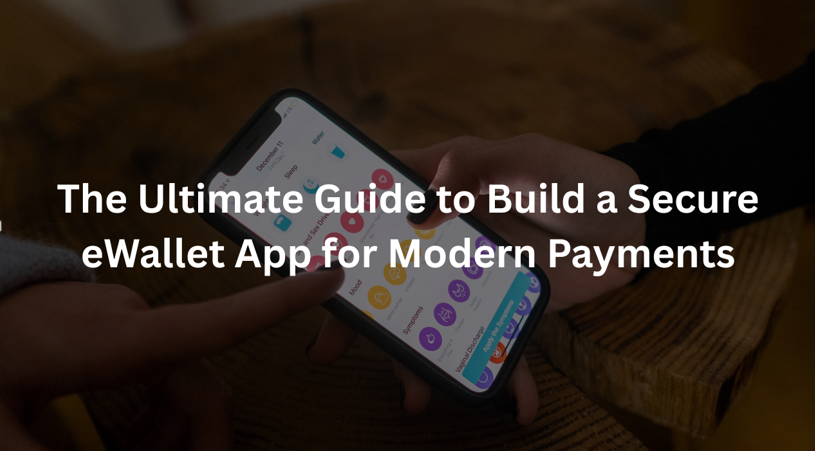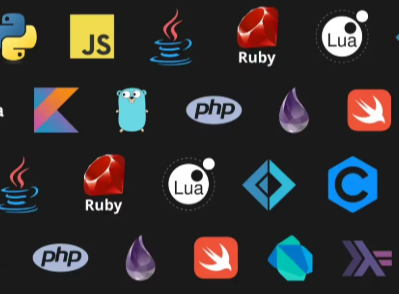The Ultimate Guide to Build a Secure eWallet App for Modern Payments

Every financial transaction in the digital age revolves around speed and convenience. Mobile wallets have revolutionized the way individuals manage their finances, whether it is through bill splitting, online shopping, or international money transfers. The need for developing secure eWallet apps has increased dramatically as the cashless economy becomes more prevalent. Businesses of all sizes, from fintech startups to well-established corporations, are vying to provide quick, flexible, and secure digital payment solutions.
Understanding a digital wallet app’s features, architecture, technology, and security measures is crucial if you intend to develop one. Everything you need to know about creating a safe eWallet app for contemporary payments in 2025 will be covered in this article.
Recognizing eWallets and Their Increasing Use
An eWallet, also known as a digital wallet, is a mobile application that allows users to perform instantaneous online transactions by storing their payment information, including credit card numbers, bank account information, and cryptocurrency. Mobile wallets like Apple Pay, PayPal, and Google Pay have completely changed the finance scene in recent years.
By 2025, the worldwide eWallet market is expected to grow to over $3 trillion due to factors like customer desire for contactless transactions, eCommerce growth, and rising smartphone penetration. Furthermore, eWallets are now essential to managing personal and business finances as cross-border payments and decentralized finance (DeFi) develop.
It takes more than just developing a payment tool to create a safe, feature-rich eWallet software; it also takes trust-building. Security architecture is essential to the construction of a successful eWallet software since users expect their financial data to be handled with the highest level of security and transparency.
Essential Elements of a Safe eWallet App
To provide a seamless and secure transaction experience, a well-designed eWallet software incorporates several systems. Among its essential elements are:
User Wallet Account: To store and manage money, each user has a digital account connected to their bank account information or credit cards.
Payment Gateway Integration: Enables safe transactions using net banking, UPI, and debit/credit cards.
Transaction Management System: Provides real-time alerts for deposits, withdrawals, and transfers.
Data Security and Encryption: Uses two-factor authentication, tokenization, and SSL encryption to safeguard private information.
Administrators can manage users, monitor transactions, and ensure compliance using the admin dashboard.
The speed, dependability, and security of your wallet app are determined by how well these components work together.
eWallet App Types
It’s crucial to specify the kind of wallet you want to make before development starts. In general, there are three types of eWallets:
Closed wallets: used by certain companies, such as Starbucks Wallet or Amazon Pay, where money can only be spent inside the business’s network.
Users can deal with certain merchants using semi-closed wallets. Two excellent examples of this concept are Paytm and PhonePe.
Open wallets: Provide total flexibility by allowing payments, transfers, and bank withdrawals from any location. The two most popular open wallet systems are PayPal and Google Pay.
The type you select will affect your on demand app development features, security protocols, and compliance needs.
See also: How to Create Perfect Chamfered Corners: Tips and Techniques
Essential Elements of a Contemporary eWallet App
A successful eWallet app blends strong security, innovation, and usability. Among the crucial characteristics are:
KYC verification and user registration: guarantees adherence to banking standards and identity verification.
Bank Account Integration: Enables the easy connection of UPI IDs, cards, and bank accounts.
Instantaneous peer-to-peer and business transactions are made possible via real-time payments and transfers.
Contactless purchases for real stores and services are made easier with QR codes and NFC payments.
Expense Management Dashboard: Assists users in monitoring their past transactions and spending patterns
Users are informed about payments, deals, or questionable activity through in-app notifications.
Support for several currencies and cryptocurrencies: Increases capability for international transactions and digital assets.
24/7 Customer Support: Establishes credibility by promptly answering user questions.
Every feature helps to create a trustworthy and interesting financial experience.
eWallet App Security Features
The foundation of developing an eWallet app is security. Strong security mechanisms must be implemented because the program handles sensitive financial data.
Current eWallet applications ought to have:
End-to-end encryption guarantees the confidentiality of all information sent between users and servers.
Tokenization: To prevent breaches, encrypted tokens are used in place of card information during transactions.
Using PINs, biometrics, or OTPs, two-factor authentication (2FA) adds an additional layer of verification.
Biometric authentication: Prevents unwanted access by enabling facial or fingerprint identification.
Fraud Detection and AI Monitoring: Prevents fraudulent transactions by identifying suspicious patterns using AI algorithms.
PCI DSS Compliance: Guarantees compliance with global payment security guidelines.
How well your app manages cyberthreats and safeguards data will determine how successfully it gains user confidence.
Technology Stack for Developing eWallet Apps
Choosing the appropriate technological stack that guarantees scalability, performance, and security is also essential to the success of an mobile banking app development.
Frameworks like Flutter, React Native, and Swift are frequently used in frontend development to guarantee cross-platform compatibility. The backend is frequently powered by databases like PostgreSQL or MongoDB and runs on Node.js, Django, or Ruby on Rails.
Services like AWS, Google Cloud, and Microsoft Azure offer scalable and secure infrastructure for cloud integration. In the meantime, blockchain integration is becoming more and more well-liked due to its capacity to improve transaction transparency and stop fraud.
Developers can build a strong system that can manage millions of safe transactions every day by integrating these technologies.
How to Create a Safe eWallet App?
It takes careful planning and execution to create a safe eWallet application. Usually, the procedure consists of:
1. Planning and Market Research
Determine your distinct value offer by examining your competition and target market. Determine the legal requirements specific to the area in which you operate.
2. Design of UI/UX
Create an interface that is easy to use, clear, and accessible so that people from all walks of life can manage their finances more easily.
3. Progress
Using the chosen technology stack, start writing the application. Include the necessary APIs for alerts, KYC, and payments.
4. Security audits and testing
To find errors or vulnerabilities, undertake penetration, performance, and functional testing. Verify that the app conforms with local banking standards, PCI DSS, and GDPR.
5. Implementation and Upkeep
Once testing is complete, release your software on stores like the software Store and Google Play. After launch, continuously improve the user experience and upgrade security features.
By taking these precautions, you can be sure that your eWallet app is secure and works properly.
Expense of Creating a Safe eWallet App
The complexity, design, and location of your development team all affect how much an ewallet app development cost.
While a high-end, feature-rich wallet with blockchain integration and enhanced security can cost over $150,000, a basic eWallet software with typical payment functions might cost between $40,000 and $80,000. Server upkeep, cloud hosting, compliance certification, and technical assistance are extra costs.
Even while the investment might appear high, in the expanding fintech business, the long-term return—through income generation, scalability, and user trust—is tremendous.
eWallet App Development’s Future
eWallet apps appear to have a bright future and are more secure than before. Financial transparency will be redefined in 2025 and beyond by combining blockchain-based verification, biometric authentication, and AI-driven fraud detection.
Innovation will also be fueled by the growth of crypto payments and central bank digital currencies (CBDCs). Furthermore, the next generation of digital banking will be dominated by super-app ecosystems, which include lifestyle, commerce, and payment services.
As consumers seek quicker, safer, and more intelligent payment experiences, security and customization will continue to be top priorities.ewallet app development company that put trust and data security first will stand out in the fiercely competitive fintech market.
In conclusion
It takes a combination of creativity, adherence to regulations, and user-centered design to create a safe eWallet app for contemporary payments. Every security layer, from biometric verification and encryption to AI-based fraud detection, is essential to protecting user data.
Creating a feature-rich and reliable eWallet software is not just a financial opportunity, but also a step toward influencing the direction of finance as the world continues to move toward digital transactions. You may design a wallet solution that empowers people and transforms how they handle money in the contemporary period by emphasizing usability, security, and scalability.






